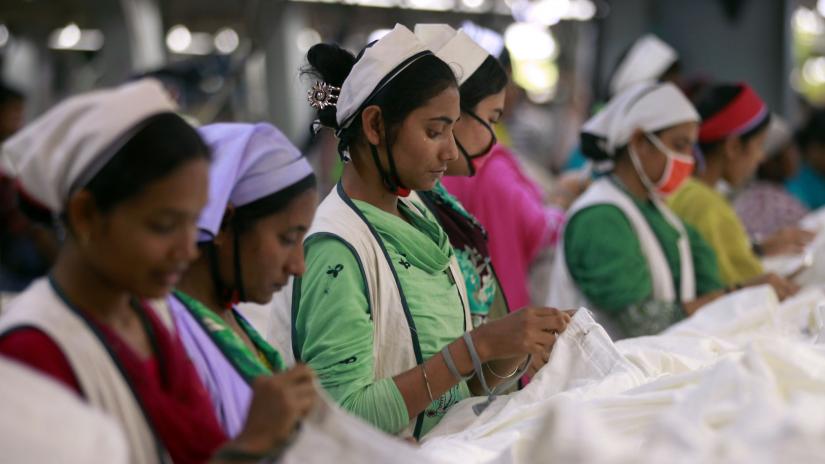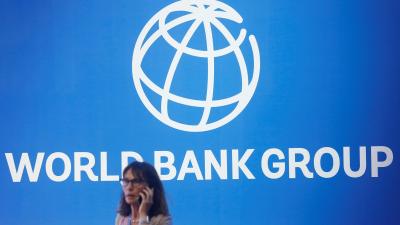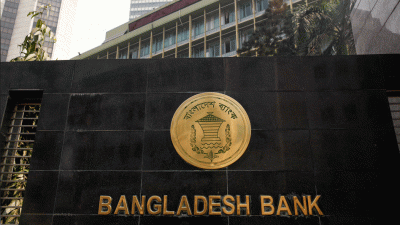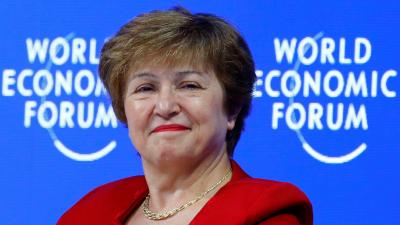 The lion's share of Bangladesh's export is limited to only 10 countries, leaving the country highly dependent on these markets in the absence of initiatives to explore new destinations.
The lion's share of Bangladesh's export is limited to only 10 countries, leaving the country highly dependent on these markets in the absence of initiatives to explore new destinations.
The ten countries imported over 71% or $28.89 billion of Bangladesh’s total exported goods in the just-concluded fiscal year, with the United States of America taking the lead with 17% exports share.
According to Export Promotion Bureau (EPB) data, in the fiscal year, 2018-19 Bangladesh earned $40.53 billion, of which $28.89 billion or 71.27% of the total exports came from the USA, Germany, the United Kingdom, Spain, France, Italy, Canada, Japan, the Netherlands and Poland.
Of the total amount, $25.53 billion came from the apparel goods.
The US, the single largest export destinations for Bangladeshi goods, especially apparel, imported goods worth $6.88 billion, which is 16.96% of Bangladesh’s total exports.
Bangladesh’s exports to the US market rose by 14.92% or $893 million to $6.88 billion, which was $5.98 billion in the previous fiscal year. Apparel goods earned $6.13 billion, posting a 14.60% growth over the previous years’ earnings.
Exports to the US market rose sharply due to US-China trade war, which prompted global buyers to shift work orders from China to Bangladesh. This is because of rising in tariff, which ultimately pushed the production cost, exporters have said.
In March this year, the Asian Development Bank (ADB), said Bangladesh merchandise exports would increase by additional $400 million and its gross domestic product (GDP) by 0.19% by the next one or two years if the prevailing international trade conflicts involving the US and China escalated.
Exporting goods to Germany, the second largest destination, Bangladesh earned $6.17 billion, up by 4.79%, which was $5.90 billion in the FY18. Germany imported 15.23% of goods from Bangladesh’s total exports.
Of the total exports, $5.84 billion came from the apparel products, which posted 4.68% growth.
On the other hand, export earnings from the UK rose by 4.51% to $4.17 billion, which is 10.29% of the total exports of Bangladesh.
Trade analyst and exporters called for measures to explore new markets to reduce dependency on a few markets and diversify export destinations.
“The situation has improved now. Once, 65% of Bangladesh's total export was limited to the US, which is now 17%. This is a great achievement. This is because of government incentives and manufactures efforts to explore new markets,” said former BGMEA senior vice president Faruque.
United States of America, Germany and Britain would remain the bigger markets for Bangladesh due to its population and economy size, Hassan observed.
But the sector people were trying their best to expand to new markets, which already showed positive signs, he added.
For exploring more markets to reduce dependency, Hassan urged the government to go for a bilateral trade agreement to avail duty-free market access to new counties such as the Russian Federation and South Africa.
Meanwhile, economists have expressed concern over the high dependency on some big markets and called for diversifying the markets.
“Higher dependency on a single product and few export markets is not good for a country. To sustain the export growth as well as to enlarge the export volume, Bangladesh should focus on market and products diversification,” said Policy Research Institute (PRI) executive director Ahsan H Mansur.
"I think, the government should continue the existing incentives for exploring new markets but there is a need for assessment for calculating the impacts of incentives," said the economist.
Currently, Bangladesh is providing 4% cash incentives against exports of apparel goods to non-traditional export markets in a bid to diversify export destinations.
In addition, the Bangladesh government also has offered 1% incentives for all the traditional export destinations.
Even incentives can vary based on the potentials of markets, more attention should be given on those countries where there were more scopes, he added.
"On top of that, it is high time we thought beyond the apparel sector as we are number two in the global markets. For reducing the dependency, we should focus on the countries having the need for products what Bangladeshi manufacturers produce," he added.
 Business
Business
40875 hour(s) 15 minute(s) ago ;
Evening 10:09 ; Sunday ; Jun 15, 2025
Over 71% Bangladesh's exports limited to only 10 countries
Send
Ibrahim Hossain Ovi
Published : 06:00, Jul 11, 2019 | Updated : 09:15, Jul 11, 2019
Published : 06:00, Jul 11, 2019 | Updated : 09:15, Jul 11, 2019
0 ...0 ...
/pdn/
Topics: Top Stories
- KOICA donates medical supplies to BSMMU
- 5 more flights to take back British nationals to London
- Covid19: Rajarbagh, Mohammadpur worst affected
- Momen joins UN solidarity song over COVID-19 combat
- Covid-19: OIC to hold special meeting
- WFP begins food distribution in Cox’s Bazar
- WFP begins food distribution in Cox’s Bazar
- 290 return home to Australia
- Third charter flight for US citizens to return home
- Dhaka proposes to postpone D8 Summit
Unauthorized use of news, image, information, etc published by Bangla Tribune is punishable by copyright law. Appropriate legal steps will be taken by the management against any person or body that infringes those laws.
Bangla Tribune is one of the most revered online newspapers in Bangladesh, due to its reputation of neutral coverage and incisive analysis.
F R Tower, 8/C Panthapath, Shukrabad, Dhaka-1207 | Phone: 58151324; 58151326, Fax: 58151329 | Mob: 01730794527, 01730794528






